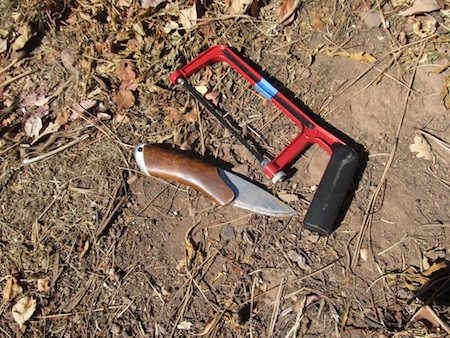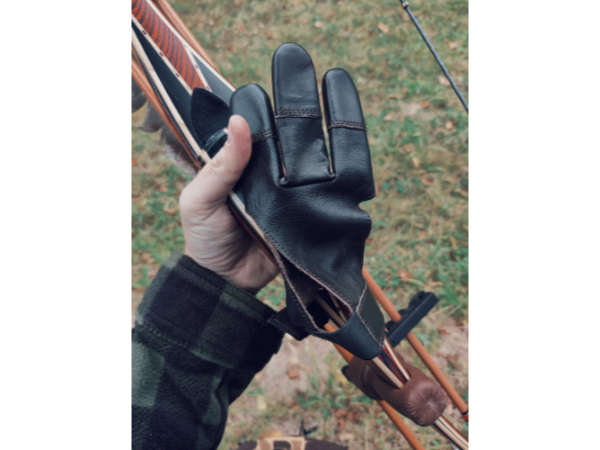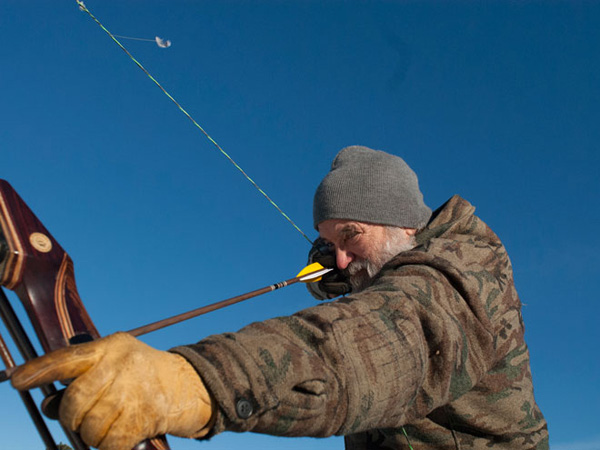If we take the advertisements seriously, we should all be packing a hunting knife as big as a machete, a bone saw sufficient to cut trees down, and maybe even a hatchet–and all that steel encased in heavy leather sheaths, of course–just to field dress a little deer. Well, as Daddy used to say, “A fool and his money are soon parted.”
In reality, very few hunters need to carry a bone saw at all, and never a hatchet, to field dress a deer. To begin with, every eastern whitetail hunter I’ve talked to prefers to gut his deer and haul it out whole, either to be hung, skinned and butchered at home, or delivered to the butcher to let him do all the sawing. Even most elk hunters, because they gut their kills, can do the quartering efficiently with just a good hunting knife (small-bladed is better than big). Which leaves only the minority I belong to who may actually need to pack a bone saw: that is, those of us who reduce our big game kills to skinned quarters right where the animal goes down, without ever gutting it. With this method you have to cut through several ribs, just below the spine, in order to create a window to reach into and remove the precious tenderloins that lie along the inside of the spine.
 In sum then, my favorite bone saw is no saw at all. However, when I’m hunting elk, because I quarter them without gutting them, I do carry a saw to facilitate tenderloin removal. After trying a variety of hunter’s bone saws over the years, I’ve found that nothing works better or cuts faster with less sweat equity than a regular old hacksaw. Since a full-sized hacksaw is a bit much to lug around in a hunting pack, I’ve settled on a mini-hacksaw. These little powerhouses are available from several manufacturers with minor variations in configuration. They are generally light and compact, shouldn’t cost more than $10 or so, and come with extra blades. I used the one pictured here to cut through all four legs and the ribs on this year’s cow elk and didn’t even dull, much less break, the original blade.
In sum then, my favorite bone saw is no saw at all. However, when I’m hunting elk, because I quarter them without gutting them, I do carry a saw to facilitate tenderloin removal. After trying a variety of hunter’s bone saws over the years, I’ve found that nothing works better or cuts faster with less sweat equity than a regular old hacksaw. Since a full-sized hacksaw is a bit much to lug around in a hunting pack, I’ve settled on a mini-hacksaw. These little powerhouses are available from several manufacturers with minor variations in configuration. They are generally light and compact, shouldn’t cost more than $10 or so, and come with extra blades. I used the one pictured here to cut through all four legs and the ribs on this year’s cow elk and didn’t even dull, much less break, the original blade.
Note: For a detailed overview of Dave Petersen’s preferred field-dressing and quartering method, see the chapter “Blood and Guts Made Easy,” in his book A Man Made of Elk, available from Amazon.com







Interesting choice of bone saw you have there David!
So great to see David contributing to traditional bowhunter again! He’s always been one of my favorite authors. Anyone who likes books about the outdoors and bowhunting should seek out his published works!
I have a Silky Pocketboy 130 mm with fine teeth. Very good quality and not too big to pack. They also make a 170 mm, straight or curved, with medium and course teeth for clearing shooting lanes etc.
Most compact bone saws that are marketed to hunters seem to have a blade that is too aggressive for my use. While in the woods trying to hold a leg with one hand and saw with the other, these hunting bone saws don’t work very well. I use the gutless method in on Eastern whitetail deep in public land. To me it’s the most efficient way to get one out on my own.